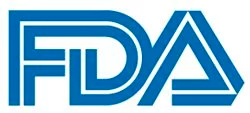News
Article
FDA Panel Votes Sufficient Evidence Available to Support EFS Benefit of Eflornithine in Pediatric High-Risk Neuroblastoma
Author(s):
In a 14-to-6 vote, the FDA’s Oncologic Drugs Advisory Committee voted sufficient evidence has been provided to demonstrate the event-free survival benefit of eflornithine to reduce the risk of relapse in pediatric patients with high-risk neuroblastoma.

In a 14-to-6 vote, the FDA’s Oncologic Drugs Advisory Committee (ODAC) voted sufficient evidence has been provided to demonstrate the event-free survival (EFS) benefit of eflornithine (drug eflornithine hydrochloride [DFMO]) to reduce the risk of relapse in pediatric patients with high-risk neuroblastoma.1
“I voted yes based on the discussion that was had and the evidence that was presented,” AeRang Kim, MD, PhD, a member of the solid tumor faculty at Children’s National Hospital and an Associate Professor of Pediatrics, said following the ODAC’s vote on October 4, 2023. “In the [proposed] indication in patients [who] had received up-front therapy and had gone into remission…I felt that the applicant [US WorldMeds] and the FDA, in their analysis, demonstrated a positive effect size. Although some of the unknown biases could not be accounted for, after adjusting for many of the known and unknown biases, the effect size still seemed to remain. Of note, the addition of [eflornithine] will not change the outcome in terms of the toxicity and [it will] lessen the late effects of up-front therapy, but I felt the data presented did improve the efficacy of EFS.”
On November 21, 2022, US WorldMeds submitted a new drug application (NDA) to the FDA seeking the approval of eflornithine to reduce the risk of relapse in pediatric patients with high-risk neuroblastoma who have completed multiagent, multimodality therapy.2 The NDA was supported by data from the phase 2 Study 3b trial (NCT02395666) and an external control arm of patients with high-risk neuroblastoma enrolled and treated on the phase 3 ANBL0032 trial (NCT00026312).
The investigative arm of Study 3b enrolled patients (n = 90) who received standard up-front therapy, including immunotherapy, per ANBL0032 protocol, and the control arm of Study 3b consisted of patients from ANBL0032 who received no further therapy following the phase 3 trial’s regimen (n = 270).3 In the investigational arm of Study 3b, patients received eflornithine.
Patients in both arms needed to be between 0 and 21 years of age with histologically verified high-risk neuroblastoma who achieved at least a partial response prior to transplant and were in remission at the end of immunotherapy. They needed to be at least 30 days, but less than 120 days, removed from up-front therapy. A Lansky score of at least 60% and adequate organ function were required.
EFS was Study 3b’s primary end point, and the findings showed that patients in the eflornithine arm experienced a benefit in both EFS (HR, 0.48; 95% CI, 0.27-0.85) and overall survival (HR, 0.32; 95% CI, 0.15-0.70). Subsequent analyses showed that an EFS benefit was still evident when: accounting for external control patients with index dates in the same period as the eflornithine arm (HR, 0.63; 95% CI, 0.36-1.11), excluding controls with early events (HR, 0.54; 95% CI, 0.31-0.96), limiting the analysis to the first 5 years of follow-up (HR, 0.51; 95% CI, 0.29-0.91), using blinded independent central review assessment for the eflornithine arm only (HR, 0.49; 95% CI, 0.27-0.89), and restricting the analysis to the United States patients only (HR, 0.43; 95% CI, 0.23-0.79).
“I applaud the FDA and the sponsor. These types of analyses need to be done in the pediatric cohort, and this might be a good precedent,” said Shahab Asgharzadeh, MD, who voted yes. “There are circumstances where we can avoid this, and in certain diseases, there are sufficient patients to do a randomized trial quickly. However, I felt in this setting, the evidence showed that [eflornithine] is effective. The preclinical trials were also compelling.”
Asgharzadeh is the director of the Neuroblastoma Basic and Translational Program, a researcher in the Division of Hematology-Oncology, an attending physician of Hematology, Oncology and Blood and Marrow Transplantation at the Children’s Hospital of Los Angeles, and an associate professor of Pediatrics at Keck School of Medicine of the University of Southern California.
During the meeting, the panel discussed potential limitations of non-randomized comparisons, such as concerns of bias due to confounding by both measured and unmeasured variables. The committee noted that although sensitivity analyses results point to the effectiveness of eflornithine in this externally controlled trial and are unlikely to be fully attributable to potential sources of bias, there is uncertainty regarding the exact magnitude of this effect.
“I vote no, and I echo other [voters] who mentioned that this was a challenging decision. I thought the thoroughness of the analysis was quite impressive,” Clare Twist, MD, a pediatric oncologist at Roswell Park Comprehensive Cancer Institute, said. “Ultimately, I voted no because I was going back to the guidelines as I understood them from the FDA, that in order to establish substantial evidence of effectiveness, a single, adequate, and well-controlled trial must be accompanied by sufficient confirmatory evidence. Particularly for an agent that is thought the work through a cytostatic mechanism, I was not convinced that what was presented met this benchmark.”
Regarding the safety of eflornithine, the proposed warnings include myelosuppression, hepatotoxicity, and hearing loss. The most common adverse effects (AEs) reported in at least 5% of patients included hearing loss, otitis media, pyrexia, pneumonia, and diarrhea. Grade 3 or 4 AEs occurred in 42% of patients, and 7% of patients discontinued treatment due to AEs. Notably, no deaths were attributed to AEs.
References
- Oncologic Drugs Advisory Committee Meeting. FDA. October 4, 2023. Accessed October 6, 2023. https://www.youtube.com/watch?v=mavF5RvkJyk
- NDA 215500. FDA. October 4, 2023. Accessed October 6, 2023. https://www.fda.gov/media/172659/download
- Eflornithine (DFMO) for patients with high-risk neuroblastoma who have completed multiagent, multimodality therapy. FDA. October 4, 2023. Accessed October 6, 2023. https://www.fda.gov/media/172726/download









